A Demon and a Palm Tree
There’s been a curious post going around on social media this morning. It’s a photograph that was purportedly taken in Arizona of what appears to be a demon dallying in a street. Over and over again, I’ve seen people assert that it’s a  palm tree, despite the fact that it’s clearly not. Let’s face it, it looks nothing like a palm tree. Now I’m not saying it is a demon (we do live in the era of Photoshop), but what is curious is the vehemence that people are defending the palm tree explanation. This reminded me of something I heard while in a trance once. In the trance I was walking down the street, but it wasn’t just populated by the living and seen, but by everything from ghosts, to faeries, to creatures of a more mythological nature. Weaving in and around the living and seen, they went completely unnoticed, and I was baffled. How could these people just go about their shopping and *not* notice that dragon? Then came the voice. It was not a ‘head voice’ but external, coming with all the force of an air canon.
palm tree, despite the fact that it’s clearly not. Let’s face it, it looks nothing like a palm tree. Now I’m not saying it is a demon (we do live in the era of Photoshop), but what is curious is the vehemence that people are defending the palm tree explanation. This reminded me of something I heard while in a trance once. In the trance I was walking down the street, but it wasn’t just populated by the living and seen, but by everything from ghosts, to faeries, to creatures of a more mythological nature. Weaving in and around the living and seen, they went completely unnoticed, and I was baffled. How could these people just go about their shopping and *not* notice that dragon? Then came the voice. It was not a ‘head voice’ but external, coming with all the force of an air canon.
“They won’t see because they don’t want to see.”
That sounds like the kind of bullshit thing a shill sells to people in order to blur the lines of their reality and make them more invested in what the shill has to sell; but there is a truth to it.
Because that is how a whole bunch of people can look at a photo of a demon dallying down some Arizona street and argue vociferously that it’s a palm tree. They simply don’t want to see. Even in the age of Photoshop when you can create a demon and add it to a photo to freak people out on the internet, people will still argue for the tree. The bubble is being threatened, and any suggestion that things are not as they seem must be destroyed in the most mundane way possible.
The lines must be redrawn between the possible and impossible and the world reasserted, people must feel safe.
Because if we do live in a world in which there might be a demon that saunters down some street in the South West, then that means that there are a whole load of possibilities and dangers that people don’t know how to counter, and nobody likes that. Who among us doesn’t like feeling like we’re the one in charge?
In the same vein, it would seem that my post ‘Witchcraft is Not Safe (and Nor Should it Be!)’ has resurfaced after almost a year of floating in the depths of the web after the initial furor. Now, as then, I’m facing a whole bunch of criticism for having the audacity to actually go to a burial mound and call up the dead.
However, in an almost-year of reading and countering criticisms about something I did back in 2005/2006 by people who obviously know far better than I did in my twenties, I’ve learned a thing or two about that criticism.
First of all, this criticism is neatly avoiding the point of the post, but also proving it in some ways. It seems to come from certain groups more than others, but all essentially boils down to the same thing: if you place the blame on the practitioner, nothing is changed. Witchcraft remains that benign, misunderstood thing that is sold as part of the shitshow that is modern identity politics, and there’s nothing that could *really* harm you – except maybe breaking that ‘rule of three’ (and don’t get me started on that one).
Often it starts out with a ‘this wouldn’t have happened had you (not) done _______’. But the curious thing I’ve noticed about participating in these discussions and countering that criticism (because I do really want people to get what I was saying), is that when you counter with how you did do that, then you end up with a litany of similar pronouncements. The more you counter and detail the measures you took, the more the goalposts widen, and in the end it feels as though you’ve gone well into the territory of clutching at straws.
Challenging the Status Quo
People in Pagan magical communities, especially those who are considered authorities (or would like to be), hold up things going off without a hitch as being some kind of gold standard of their skill. But I don’t think that’s anything anyone should be proud of – no sword was ever considered strong or even usable without being tempered first. If anything, this adherence to making out like your magical shit doesn’t stink is contributing to the moribund state of magic in modern Paganism. Moreover, if you are actually out there, pushing boundaries, working at leveling up, and you don’t have at least some stories of when things went tits up. Well, you’re either lying your arse off because you don’t want to look unskilled, you’re not as experienced as you claim, nothing is happening for you, or you’re staying where it’s safe.
There’s a point to be made about this idea of safety too. We humans like to be safe. Ever since the beginning of humanity we’ve been running risk assessments and mitigating the dangers in our lives. For the most part, we’ve got the physical side of things down. Science tells us how things work, we have some measure of predictability, and we generally sleep at night without worrying about things like changelings, revenants, and goodness knows what else.
So when something comes along that challenges that sense of safety and predictability in a visceral (as opposed to the more typically cerebral) way, we fight back. We lash out at it in the hopes that it will go away. We try to find ways to explain the scientifically unexplainable in ways that are more acceptable to our worldviews. We scream that the denizen of hell in fuck knows where AZ is a palm tree.
We try to convince ourselves once again that we are safe and that anything vaguely threatening can be put down to some fucking amateur on the internet. In other words, we convince ourselves that nothing like that could ever happen to us. That kind of thing only ever happens to other people, and probably because they didn’t follow (insert piece of worldview that further reinforces a sense of safety here).
Redux
Witchcraft is not safe (and nor should it be!), because if it is, then we’re not pushing things forward. An element of risk is a part of this game, and if you look at that risk and ask yourself why anyone would do that, then maybe it’s not the game for you.
Witchcraft is not safe (and nor should it be!), because the unseen doesn’t come with D&D-style stat sheets that we can compare with our own and make the decision to keep away. They do come with a fuckton of agency though, you know, as you might expect for independent beings that aren’t just figments of the imagination. And sometimes, you don’t get to the ‘goodies’ until you’re a few hours into ritual.
Witchcraft is not safe (and nor should it be!), because now more than ever, we need to see the world for what it is and deal with it on that basis. We need to break down our mental barriers, hate fuck the Demon Palm Tree Bubble out of existence, and reclaim what we actually lost. People talk a lot about re-enchanting the world, but to me, that sounds like a goal-idea set further down the road that people can get behind as being interesting but without actually really changing anything in the now. It remains safe because it’s not so much in the now, and we are apparently the ones to be doing the re-enchanting. Well, have you ever considered that maybe the world never stopped being enchanted but we just learned to not see it anymore (lashing out whenever we’re given a hint of it)?
Witchcraft is not safe, for a whole host of reasons, but it should never be unsafe because the people you’re working with don’t appreciate the agency of what they’re working with, have an unrealistic view of what could potentially happen, or a lack of ability to roll with it when shit goes down. Because if we’re to break down that Demon Palm Tree Bubble and live in this ‘reenchanted’ world, it is far better to be the tempered blade than the good-looking, shiny one that was never tested.

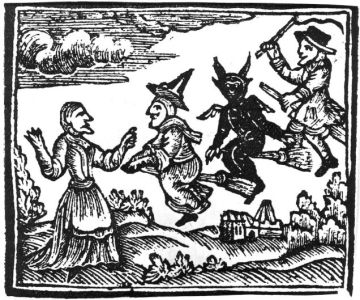

 outside of minority groups didn’t even realize there was a war until relatively recently, even though more socially conservative groups have been fighting it for years.
outside of minority groups didn’t even realize there was a war until relatively recently, even though more socially conservative groups have been fighting it for years.
 about the snakes. Were it not for the serpent’s temptation, Eve would have never eaten from the tree of knowledge of good and evil, nor would Adam, and mankind would still apparently be living it up in the garden of Eden.
about the snakes. Were it not for the serpent’s temptation, Eve would have never eaten from the tree of knowledge of good and evil, nor would Adam, and mankind would still apparently be living it up in the garden of Eden. Dream is a special state of being, one we tend to think of as a place of infinite possibilities in which we may do or experience any number of things that we cannot during waking life. However, from the work of scholars like
Dream is a special state of being, one we tend to think of as a place of infinite possibilities in which we may do or experience any number of things that we cannot during waking life. However, from the work of scholars like both in our outer and inner lives. Becoming aware of those walls, and how they are built is only the first step. The next step is working consciously to bring them down through deliberate action, but we can only do that if we first free ourselves, and most importantly our inner worlds. Lastly, we need to counter the magic that enslaves dream and mind, finding ways to appeal to the hearts and minds of others – the Berlin wall was not torn down by the hands of a few, but by many. If there is anything this past election should have taught us, it’s that haughty cold logic and the mere presentation of that which holds back all that is bad is not enough. We need symbols and messages that appeal to not only minds, but hearts and souls too.
both in our outer and inner lives. Becoming aware of those walls, and how they are built is only the first step. The next step is working consciously to bring them down through deliberate action, but we can only do that if we first free ourselves, and most importantly our inner worlds. Lastly, we need to counter the magic that enslaves dream and mind, finding ways to appeal to the hearts and minds of others – the Berlin wall was not torn down by the hands of a few, but by many. If there is anything this past election should have taught us, it’s that haughty cold logic and the mere presentation of that which holds back all that is bad is not enough. We need symbols and messages that appeal to not only minds, but hearts and souls too.


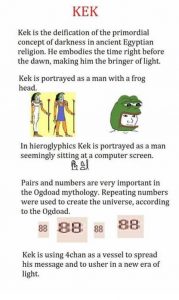 headed god of primordial darkness. Counted among the Ogdoad, Kek was one of eight primordial Old Kingdom deities that were considered ancient even by the time of the composition of the Pyramid Texts (officially 2400-2300 BCE, although that is debated). Kek was the ‘bringer of light’, the chaotic darkness that heralded the new dawn – or at least that’s how the denizens of 4chan have taken him to be. For the users of 4chan, all of this added up to one thing: Trump was ‘god’s chosen candidate’.
headed god of primordial darkness. Counted among the Ogdoad, Kek was one of eight primordial Old Kingdom deities that were considered ancient even by the time of the composition of the Pyramid Texts (officially 2400-2300 BCE, although that is debated). Kek was the ‘bringer of light’, the chaotic darkness that heralded the new dawn – or at least that’s how the denizens of 4chan have taken him to be. For the users of 4chan, all of this added up to one thing: Trump was ‘god’s chosen candidate’. pandering by the press, a showing of any weakness from Clinton was welcomed by the opposition. A day later, the
pandering by the press, a showing of any weakness from Clinton was welcomed by the opposition. A day later, the  P.E.P.E
P.E.P.E


 Although the hieroglyphs indicate that the statue is in fact depicting Heqet, a goddess of fertility that also has the form of a frog, that ultimately doesn’t matter to the Kekists who have purchased it. For them and everyone else who doesn’t read hieroglyphs, the symbolism is clear, and in a world of meme, that’s all that really matters. A cursory search of Pepe and Kek-related goods on Amazon also reveals an awareness by participants in the various 4chan-originated memes and meme wars. Among Kek/Pepe-related booty to be found on Amazon are books on Kek’s cult, and more significantly, books on Kek/Pepe internet meme magic.
Although the hieroglyphs indicate that the statue is in fact depicting Heqet, a goddess of fertility that also has the form of a frog, that ultimately doesn’t matter to the Kekists who have purchased it. For them and everyone else who doesn’t read hieroglyphs, the symbolism is clear, and in a world of meme, that’s all that really matters. A cursory search of Pepe and Kek-related goods on Amazon also reveals an awareness by participants in the various 4chan-originated memes and meme wars. Among Kek/Pepe-related booty to be found on Amazon are books on Kek’s cult, and more significantly, books on Kek/Pepe internet meme magic.



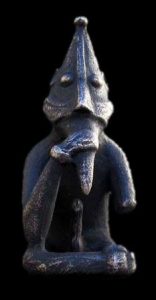

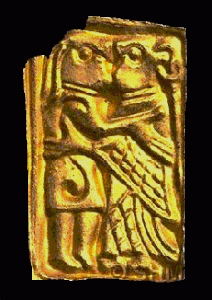
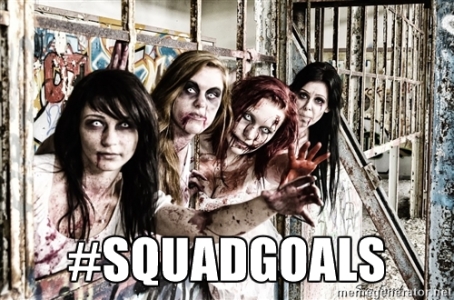


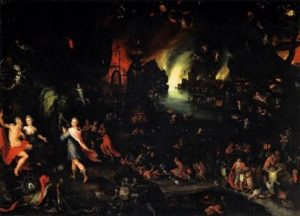



 trancing-while-asleep part from each other. I’ve found the latter mostly only comes when doors must be beaten down and messages gotten across, and the day afterwards is always marked by the rough dragging of exhausted limbs. Whether you are awake or asleep, trance is work. Most
trancing-while-asleep part from each other. I’ve found the latter mostly only comes when doors must be beaten down and messages gotten across, and the day afterwards is always marked by the rough dragging of exhausted limbs. Whether you are awake or asleep, trance is work. Most  people don’t see this fork or experience anything but dream. But for those of us that do this kind of work, it seems to be the case that the more you do the work, the more that fork in the road is revealed.
people don’t see this fork or experience anything but dream. But for those of us that do this kind of work, it seems to be the case that the more you do the work, the more that fork in the road is revealed. home. He’d had a dream about the duel and seen himself get wounded in the face before killing his opponent. To Innes’ amazement, there was a large red welt upon the man’s face which he claimed was dream-gotten. Shortly after that, the other man also called Innes to his home with a strange story of a dream. In it, he had seen himself killed and was subsequently more than happy to issue an apology.
home. He’d had a dream about the duel and seen himself get wounded in the face before killing his opponent. To Innes’ amazement, there was a large red welt upon the man’s face which he claimed was dream-gotten. Shortly after that, the other man also called Innes to his home with a strange story of a dream. In it, he had seen himself killed and was subsequently more than happy to issue an apology.

 dwelled upon it. Of course, this onion also affects the kinds of Unseen that might be there: the types of Unseen, their attitudes towards humans, how they expect interactions to look, the pacts that were made between humans and Unseen in years past, and the kinds of offerings they like. Sometimes these layers are things that you might expect. After all, who doesn’t expect Native American layers, and other layers made up of mostly Christianity in America? But even in America, there are also often layers that are far less expected – like the layer of occultism derived from
dwelled upon it. Of course, this onion also affects the kinds of Unseen that might be there: the types of Unseen, their attitudes towards humans, how they expect interactions to look, the pacts that were made between humans and Unseen in years past, and the kinds of offerings they like. Sometimes these layers are things that you might expect. After all, who doesn’t expect Native American layers, and other layers made up of mostly Christianity in America? But even in America, there are also often layers that are far less expected – like the layer of occultism derived from 
 In other words, if space is a container for action, actions set down layers (which call other similar actions to themselves), and there is a force that ensures that those contexts are revisited, then it would stand to reason that spaces have ‘patterns’ or contexts that get revisited again and again. Not only that, but these patterns don’t just affect humans; as the first Bauschatz quote says, these spaces-as-containers-for-action also seem to apply other beings too. Or at least that’s the best guess of what Germanic Heathens thought about the matter during the Heathen period.
In other words, if space is a container for action, actions set down layers (which call other similar actions to themselves), and there is a force that ensures that those contexts are revisited, then it would stand to reason that spaces have ‘patterns’ or contexts that get revisited again and again. Not only that, but these patterns don’t just affect humans; as the first Bauschatz quote says, these spaces-as-containers-for-action also seem to apply other beings too. Or at least that’s the best guess of what Germanic Heathens thought about the matter during the Heathen period.




 In the first book of the Encyclopedia,
In the first book of the Encyclopedia, tradition. The PGM date from between 200 B.C.E and 500 C.E, and are the product of intense cross-cultural interaction and blending in the Mediterranean. Kadmus sums this up best when he writes in his review that the PGM are “just as much Egyptian Magical Papyri as Greek ones”.
tradition. The PGM date from between 200 B.C.E and 500 C.E, and are the product of intense cross-cultural interaction and blending in the Mediterranean. Kadmus sums this up best when he writes in his review that the PGM are “just as much Egyptian Magical Papyri as Greek ones”. without the benefit of reading the Encylopedia, I think that if there’s one thing the grimoires teach us, it’s that the world was never so simple. Cultures interacted, people traveled, aspects of the ‘not us’ found their way in to the ‘us’, and the world marched ever on. Traditions grew, metamorphosed, and sometimes even died. The Armadel method was transmitted, spirit lists persisted (
without the benefit of reading the Encylopedia, I think that if there’s one thing the grimoires teach us, it’s that the world was never so simple. Cultures interacted, people traveled, aspects of the ‘not us’ found their way in to the ‘us’, and the world marched ever on. Traditions grew, metamorphosed, and sometimes even died. The Armadel method was transmitted, spirit lists persisted (


